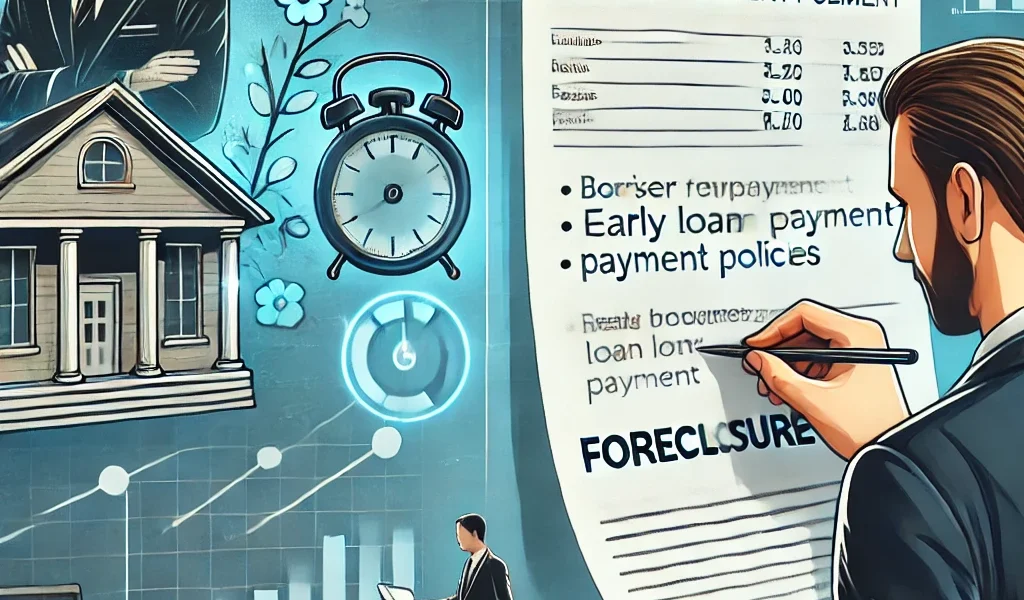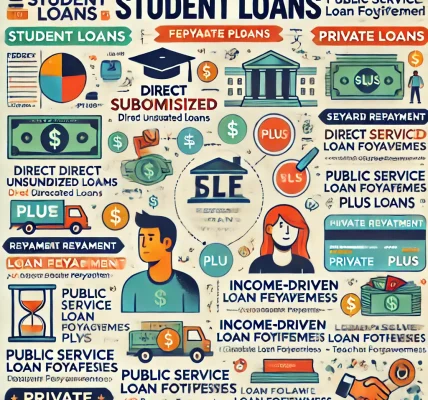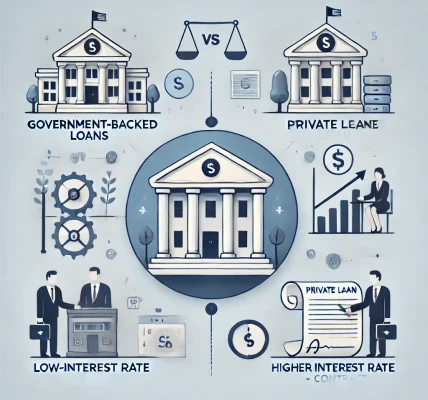Introduction
When borrowing a loan, it’s essential to understand the policies related to prepayment and foreclosure. These terms can significantly impact your financial planning, interest burden, and overall cost of borrowing.
Prepayment allows borrowers to pay off their loans earlier than scheduled, while foreclosure refers to fully repaying the outstanding balance before the loan term ends. Both options come with advantages and disadvantages, depending on the loan type and financial circumstances.
Understanding Loan Prepayment
What is Loan Prepayment?
Loan prepayment is when a borrower pays off a portion of their loan before the scheduled EMI (Equated Monthly Installment) period. This can be done in two ways:
- Partial Prepayment – Paying off a lump sum to reduce the outstanding principal and interest burden.
- Full Prepayment – Paying off the entire loan balance before its tenure.
Pros of Loan Prepayment
- Reduced Interest Burden – By paying off a portion of the principal, borrowers reduce the interest payable over time.
- Faster Debt Clearance – Prepayment helps in becoming debt-free sooner, improving financial stability.
- Improved Credit Score – Successfully prepaying loans demonstrates financial discipline and positively impacts credit history.
- Increased Loan Eligibility – Future loan approvals may become easier due to reduced outstanding liabilities.
Cons of Loan Prepayment
- Prepayment Charges – Some lenders impose penalties on early payments, reducing potential savings.
- Reduced Liquidity – Using surplus funds for prepayment may limit cash reserves for emergencies or investments.
- Tax Benefit Loss – Certain loans, like home loans, provide tax benefits on interest payments, which may be reduced due to early repayment.
Understanding Loan Foreclosure
What is Loan Foreclosure?
Foreclosure is when a borrower repays the full outstanding amount of the loan before the tenure ends, closing the loan account permanently.
Pros of Loan Foreclosure
- No More EMI Burden – Eliminates the need to make monthly payments, freeing up cash flow.
- Significant Interest Savings – Long-term interest expenses are avoided, leading to cost savings.
- Better Financial Planning – Reduces long-term liabilities, allowing better investment opportunities.
- Credit Score Boost – A closed loan account with successful foreclosure can enhance a borrower’s credit score.
Cons of Loan Foreclosure
- Foreclosure Charges – Many financial institutions charge a penalty for foreclosing loans early.
- Potential Investment Loss – Instead of foreclosure, funds could be invested in higher return opportunities.
- Tax Deduction Reduction – If applicable, tax deductions on interest payments may be lost after foreclosure.
Key Factors to Consider
- Lender’s Prepayment and Foreclosure Policy – Understand if penalties apply and compare lenders before making a decision.
- Loan Type – Home loans, personal loans, and business loans may have different prepayment rules.
- Remaining Loan Tenure – Early payments are more beneficial when made during the initial years of the loan.
- Financial Goals – Ensure that prepayment or foreclosure aligns with your long-term financial plans.
Conclusion
Prepayment and foreclosure policies offer borrowers financial flexibility, but they must be used strategically. Understanding their advantages and drawbacks helps in making informed financial decisions, reducing loan costs, and improving financial health. Always review lender terms and consult a financial expert if necessary before making any early repayment decision.




